Featured Sale
Explore Our Collections
Commercial Dehumidifiers
Efficiently control humidity, aiding construction and water damage restoration
Learn MoreCrawl Space Dehumidifiers
Regulate moisture, prevent mold, maintain structural integrity in tight spaces
Learn MoreAir Filtration For Workshop
Portable, powerful, eliminates toxic wood dust for a dust-free workshop
Learn MoreCrawl Space Ventilation Fan
Ensure proper airflow circulation to prevent moisture buildup
Learn MoreAbestorm: All - in - One Air Solution

Basement & Crawl Space
Professional moisture control and waterproofing for basements and crawl spaces.

Fire & Smoke Restoration
Complete fire damage repair and smoke odor elimination services.

Flood & Water Restoration
Emergency water removal and restoration services following flooding disasters.

Fast Dry for Construction
Rapid drying solutions for construction sites to maintain project timelines.
Your Local Dehumidification Experts




Convenient Local Service
Select Abestorm for worry-free experience with free shipping within the USA and expert guidance.
Space-Saving Design
Compact and portable, our dehumidifiers are designed for easy storage and transport.
Sturdy Durability
Every product features a protective exterior to prevent impact damage and natural wear.
Certified Quality
Many of our dehumidifiers are Energy Star and ETL certified, ensuring products that exceed customers' expectations.
Hear From Our Users
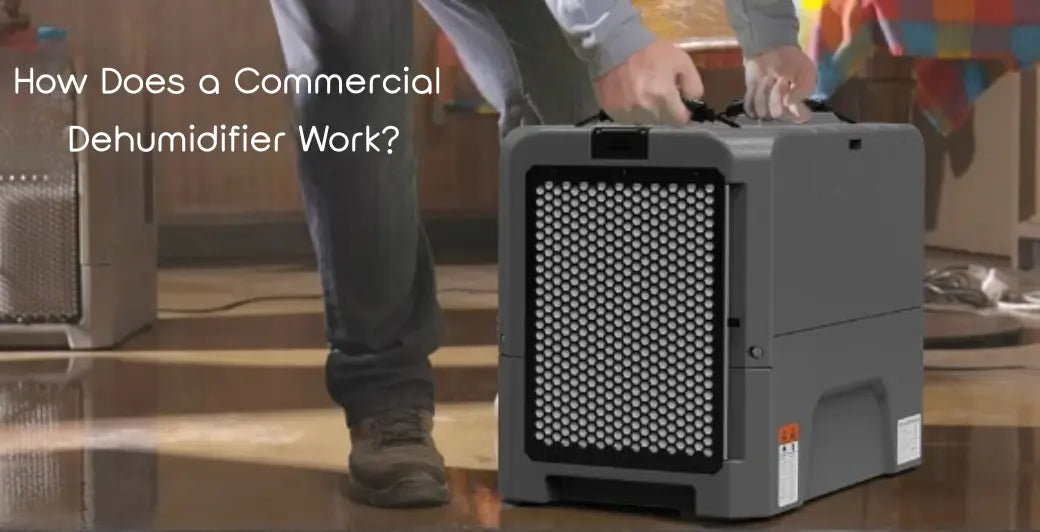
How Does a Commercial Dehumidifier Work
Humidity issues impact commercial zones beyond anyone can realize. Water buildup generates harm, disturbance, and health issues, from workshops and warehouses to crawlspaces and basements. But how do commercial dehumidifiers work to solve all these problems? Today’s guide describes the dehumidifier working principle and features the distinct kinds of industrial dehumidifiers, the benefits of using a commercial dehumidifier, and when to use them. What Is a Commercial Dehumidifier? A commercial dehumidifier is a large-capacity device designed to pull out large quantities of water from the air. The units are powerful and more reliable compared to normal models. Typically, they’re utilized in areas in places where common house dehumidifiers would not survive _ such as construction zones, warehouses, crawlspaces, and flooded buildings. Different from homely units, commercial dehumidifiers are made for constant use and intensive task compilation. They present well-built fans, big coils, and smart drainage setups that function in challenging atmospheres. Even if you’re dehumidifying a garage or addressing water damage, commercial dehumidifiers manage more air per hour and eliminate more water each day. That said, a few units involve fixed pumps for drainage, such as an industrial dehumidifier with pump, permitting the dehumidifier to work without interference. So, How Do Commercial Dehumidifiers Work? An awareness of how commercial dehumidifiers work assists you in selecting the correct unit and using it successfully. These devices are tailored for tough tasks, too much humidity, and constant use. Here’s how a dehumidifier works: 1. Air Intake Through a Powerful Fan Each industrial dehumidifier starts by bringing damp air into the unit through a powerful fan. The fans are robust compared to the ones in house models as they ought to manage big quantities of air covering wide areas. This air circulation is crucial for quick humidity disposal. 2. Moist Air Passes Over Cold Coils (Condensation) When inside, the air cut across chilled coils. Here begins the primary action. The humidity in the air compresses into drops while it meets these cold surfaces. That said, this is the heart of the dehumidifier working principle utilized in many commercial dehumidifiers and crawlspace dehumidifier units. 3. Water Is Collected or Pumped Out The distilled water gathers in a container or is forced out using a drain hose. A commercial dehumidifier with pump mechanically shifts water to a closer drain or reservoir, empowering continual activity. This is necessary in commercial settings where pausing to free a tank isn’t helpful. 4. Dry Air Is Reheated and Released Following water disposal, the air passes through hot coils to put it back to room temperature. Later, the commercial dehumidifier moves air back into the area. This aids in reducing the dampness slowly while sustaining indoor relief. 5. Continuous Operation and Smart Controls Besides, commercial dehumidifiers are made for intensive use. So, they operate constantly, mostly for days ultimately, with mechanical closes-off, restart, and defrost characteristics. Smart dehumidifiers notice room dampness and regulate productivity as required. Types of Commercial Dehumidifiers Commercial areas have several humidity issues. This is the reason, why different kinds of commercial dehumidifiers, each designed for particular situations. Here’s the detail: Refrigerant Dehumidifiers: Refrigerant dehumidifiers operate a refrigerant and compressor to bring in damp air through a chill evaporator coil to liquefy the water carried in the air. The coil unit re-heats the dry air and delivers it back into the area. Also, compact and foldaway make them easily transportable when required. In case, you’re dehumidifying a garage, this kind offers quick and long-term outcomes. Desiccant Dehumidifiers: Desiccant dehumidifiers suck up dampness utilizing chemical desiccants rather than chilled coils. Typically, they operate better in low temperatures anywhere refrigerant units are lacking. These industrial dehumidifiers are mostly utilized in cold storage spaces or during winter restoration tasks. When you’re handling chill, humid atmospheres, this unit might do better compared to classic alternatives. Low-Grain Refrigerant (LGR) Dehumidifiers: LGR dehumidifiers are modern types of normal refrigerant systems. The models chill air more effectively and remove extra water, even in tough states. That said, the dehumidifiers are used in water damage repair and flood recovery. The common in this class is an industrial dehumidifier with pump. Ventilation Dehumidifiers: These models extract humidity and at the same time also replace dead air with clean air. Usually, the dehumidifiers are linked to HVAC setups. They function better in commercial buildings, offices, or schools where air change is significant. The Role of Proper Humidity Control in Commercial Settings Good moisture control in commercial settings is not only a question of convenience; it’s a crucial element in sustaining production performance, goods standards, and workers' well-being. Changes in moisture levels can have serious effects on a wide variety of businesses, starting from building to food pharmaceuticals, and processing. Besides, too much humidity can cause the breakdown of equipment, the decay of goods, and an increase of bacteria and mold, though too little moisture can lead to electrostatic problems and endanger material durability. Commercial dehumidifiers assist stop mold, save electronics and substances, and lower health issues by maintaining moisture at good levels. Regarding confined areas, a crawlspace dehumidifier provides targeted humidity extraction. Benefits of Using a Commercial Dehumidifier Investing in a commercial dehumidifier for big or humidity-prone areas comes with several benefits: Fast and Efficient Moisture Removal Commercial dehumidifiers are made to treat great amounts of air swiftly. Indeed, they extract great levels of humidity in a brief period, which is crucial in flood recovery, building, or storage settings. Besides, the finest industrial dehumidifier with a pump guarantees that moisture is eliminated constantly without shutting off the model, making it best for constant working. Healthier Indoor Air Too much humidity permits mold, mildew, and air-induced irritants to grow. These influence air quality and lead to respiratory problems. In such scenarios, a crawlspace dehumidifier or a full-size industrial dehumidifier assists extract these allergens. Protects Structures and Equipment Dampness destroys building matter, twists wood, and eats away metal. Also, it damages electrical tools and stocked products. A commercial dehumidifier lowers the chance by maintaining humidity levels in the secure range. Consequently, it stops durable harm and increases the span of tools and structures. Lower Maintenance Costs Humidity supports rot, corrosion, and mold _ all these cause expensive repairs. By operating a commercial dehumidifier, specifically in crawl spaces or garages, you lower the risk of these issues and ultimately save money. Energy-Efficient Options for Long-Term Use Nowadays, industrial dehumidifiers are designed with energy saving in mind. Several units regulate activity depending on humidity levels, minimizing energy usage and not sacrificing productivity. Where and When to Use a Commercial Dehumidifier? Commercial dehumidifiers are created and trusted for a wide variety of applications: Water Damage Restoration Construction tasks are to keep substances dry up and stop mold formation. Basements and Crawl spaces to prevent mold and wood decay under the home. Storage zones and Warehouses If you’re confused about when to use a commercial dehumidifier, first measure your indoor humidity with a hygrometer. If the reading persistently stays over 50%-60%, action is necessary. Conclusion In commercial settings, controlling humidity is not elective _ it’s critical. Dampness can harm tools, wear down structures, and lower air quality. Even if you’re engaged in a warehouse, dehumidifying a garage, or saving a crawl space, reliable commercial dehumidifiers keep projects functioning smoothly and areas safe. Powerful Moisture Control Starts Here! Explore Abestorm’s range of commercial dehumidifiers, crawlspace dehumidifiers, and industrial dehumidifiers designed for high-performance use in real-world conditions. We provide sturdy manufacturing, digitalized quality, and effective humidity extraction for all kinds of areas. Purchase wisely. Dry quickly. Choose Abestorm.

Can Too Much Humidity Make You Sick?
Hot, damp summer days could feel overwhelming at times. People mostly note whether the air seems very warm or very cold. However, some look at indoor humidity. In fact, high humidity in the air can affect your well-being in more ways than you think. This paves the way to the key question: can too much humidity make you sick? The answer is yes. Too much humidity influences bodily processes. Also, it impacts air quality and raises the possibility of particular diseases. This post will explore the health problems related to high humidity, signs your house might be too humid, how to monitor it, and how the best dehumidifiers can assist you in being in good health. What Happens to Your Body in High Humidity? Indoor humidity turns into an issue when levels constantly remain over 60%. This is seen as high and can cause the two uneasiness and health dangers. That said, the best indoor humidity range is among 30% - 50%. When humidity goes beyond the given range, our bodies fight to stay cool. Typically, the body discharges heat via sweat. However, in damp air, sweat does not dry up conveniently. So, it makes the body hold on to heat, which results in exhaustion and overheating. As Dr. Benjamin said, “The inability to cool down leaves us more than just uncomfortable. It actually wears on our internal processes,” as our core temperature continues to rise, our bodies need to work harder to try and cool us down. This causes us to overheat.” In damp areas, you might feel down, out of breath, or dizzy. That said, these are usual symptoms of high humidity in home areas, specifically places with bad air circulation. Individuals with asthma or other breathing issues experience these outcomes more. Humid air makes it difficult for such persons to inhale, which might activate outbreaks. Further humidity illness symptoms involve muscle cramps, headaches, and bad sleep. The dampness could be too extreme in case the house always seems airless or the skin feels sweaty. The above-mentioned are primary warnings that indicate that indoor air is impacting your well-being. Health Problems Linked to High Indoor Humidity Excessive indoor water content serves other than feel unbearable. Of course, it can bring about a broad spectrum of health problems. Here are the effects of high humidity on the body and atmosphere: 1. Mold and Mildew Growth – Triggers Asthma and Allergies Moisture over 60% generates the right conditions for mold and mildew, and damp air retains fine particles and other allergens. The fungi form on ceilings, walls, and secret corners, particularly in crawl spaces and basements. Besides, mold emits germs into the air, which you can inhale not knowing. The individuals who have allergies or asthma, the germs can lead to breathing problems, coughing, and nasal discomfort. So, investing in a crawlspace dehumidifier assists in stopping mold buildup from the origin. When the dampness issue is across the building, the best home dehumidifier can offer whole-area safety. 2. Dust Mites Thrive – Worsens Allergies and Eczema Eczema and different kinds of dermatitis are mostly worsened by fluctuations in humidity and temperature. So, when sweat stays on the skin in too much dampness state, it can cause heat rash. Heat rash is an irritating, intolerable skin issue that can happen when the sweat glands become blocked. Besides, dust mites are tiny creatures that eat skin cells. They like damp air and increase quickly while the water content is high. Their feces carry irritants that add to eczema, asthma, and sinus issues. Despite your house appearing spotless, too much humidity can permit dust mites to spread. Among the most efficient methods to lower them is to control humidity through the best dehumidifiers. Dehumidifying the air to a good level makes your house less attractive for dust mites and minimizes their effects. 3. Bacteria and Virus Spread – Increases Risk of Infections Excessive humidity can extend the continuity and increase bacteria and a few viruses. In hot, humid situations, spores grow quickly and remain fit for a greater extent. Consequently, this boosts the risk of infections, particularly in shared areas such as schools, offices, or gyms. This is where commercial dehumidifiers come into play. They pull out extra moisture in big or packed spaces, reducing the chance of bacteria circulating in the air. 4. Skin and Sinus Irritation – Leads to Rashes and Sinus Congestion Staying in too much humidity can impact the skin and sinuses, too. Your skin might grow acne, rashes, or itchiness because of continuous subjection to humid air. Besides, sinuses could get clogged, causing breathing difficulty and pressure headaches. 5. Dehydration In damp conditions, the body secretes extra, however the sweat doesn’t dry up appropriately. Thus, it drops water but never chills out. When you do not have sufficient fluids, this results in dehydration. Symptoms include fatigue, dry mouth, and light-headedness. These are ordinary humidity illness symptoms that individuals mostly overlook. However, with good indoor air management, they can be lowered or prevented. Besides, using the best home dehumidifiers aids in saving against such routine problems. Signs Your Home May Be Too Humid Identifying the primary symptoms of high humidity assists in stopping property and health harm. Several people observe signs without knowing that dampness is the source. For those wondering, can too much humidity can make you sick; inspecting your house for such red flags is an intelligent initial step. Damp smells, evident mold, and precipitation on windows or pipes are early signs. Twisted wood, damp air, cracked paint, or bowing ceilings indicate that dampness is harming your house. Also, allergy blowups or breathing problems indoors are the main humidity illnesses. These are all strong symptoms of high humidity in home zones. Observing these changes and using proper dehumidification tools—like a crawlspace dehumidifier or best home dehumidifier—can help restore balance and comfort. How to Measure and Monitor Indoor Humidity Learning how to examine humidity levels in the house is the first step to resolving humidity issues. It’s key to calculate the air and get control before signs show. Use a Hygrometer A hygrometer is a tiny, cheap tool that estimates indoor moisture. Position it in critical spaces such as basements, bedrooms, bathrooms, or crawl spaces. In case the reading remains over 50%, it’s high time to act. Besides, the device helps verify if the house has symptoms of high humidity in home areas. Crawl spaces, basements, and laundry rooms keep the most moisture. So, routinely check these areas with a hygrometer. Ideal Indoor Humidity Range Professionals suggest maintaining indoor humidity between 30% to 50%. Levels over 60% promote dust mites, mold, and bad air quality. When you keep humidity close to this line, you lower the possibility of high humidity sickness and save your house. How To Reduce Indoor Humidity? Lowering indoor dampness assists in improving air quality and safeguards your well-being. Begin by maintaining humidity levels between 30% and 50%. Below are some easy methods to reduce indoor humidity: Use a Dehumidifier: Investing in a dehumidifier for humidity control is the most reliable strategy. The best home dehumidifier, crawlspace dehumidifier, or commercial dehumidifier can extract dampness fast, depending on the area. Ventilate Damp Space: Switch on exhaust fans in kitchens and bathrooms throughout and after usage. Fix Leaks: Renovate any leaking faucets or pipes to stop humidity increase. Dry Laundry Outside: Try not to dry clothes indoors, because this emits dampness into the air. Utilize Moisture Absorbers: Put silica gel or moisture-absorbing bogs in corners or closets. Continuous usage of these techniques _ particularly with the finest dehumidifier, assists you in keeping good humidity levels and a favorable indoor environment. How Dehumidifiers Can Help You Stay Healthy Dehumidifiers actively contribute to lowering health dangers caused by indoor humidity. These tools pull out extra water content from the air, assisting you to remain within the good range of 30% to 50% humidity. Health Benefits of Dehumidifiers Below are some of the health benefits of the best dehumidifiers: Reducing Mold Growth: Dehumidifiers reduce moisture and prevent mold from growing on surfaces. Controlling Allergens: Dried-up air lowers dust mites, mildew, and air-induced particulates. Improving Comfort: Dehumidifiers enhance indoor comfort as dry air seems chiller, and fresher, which aids in minimizing exhaustion and headaches. Protecting Your Home: These advanced devices help avoid structural problems associated with too much humidity. Why Choose Abestorm Dehumidifiers? Abestorm dehumidifiers are designed for productivity in challenging situations. Even if you’re controlling humidity in a house, crawlspace, or commercial area, Abestorm offers intended solutions supported by innovative technology. Conclusion Thus, can too much humidity make you sick? Absolutely, it can. Starting from mold and irritants to exhaustion and breathing issues, the effects of high humidity on the body are real. The great news is that this issue can be controlled. By investing in the best dehumidifiers, you can take charge of your indoor air. The units assist you in lowering humidity, upgrading air quality, and securing your home and well-being. Breathe Better. Live Healthier! Don’t delay in letting humidity lead to harm or discomfort. Control humidity now with Abestorm. Delve into our wide variety of solutions tailored for performing in real situations at home, in crawlspaces, or in commercial buildings. Choose smarter air. Choose Abestorm.
Expert Dehumidifier Solutions
Abestorm provides custom dehumidifier solutions for moisture, mold, and air quality.







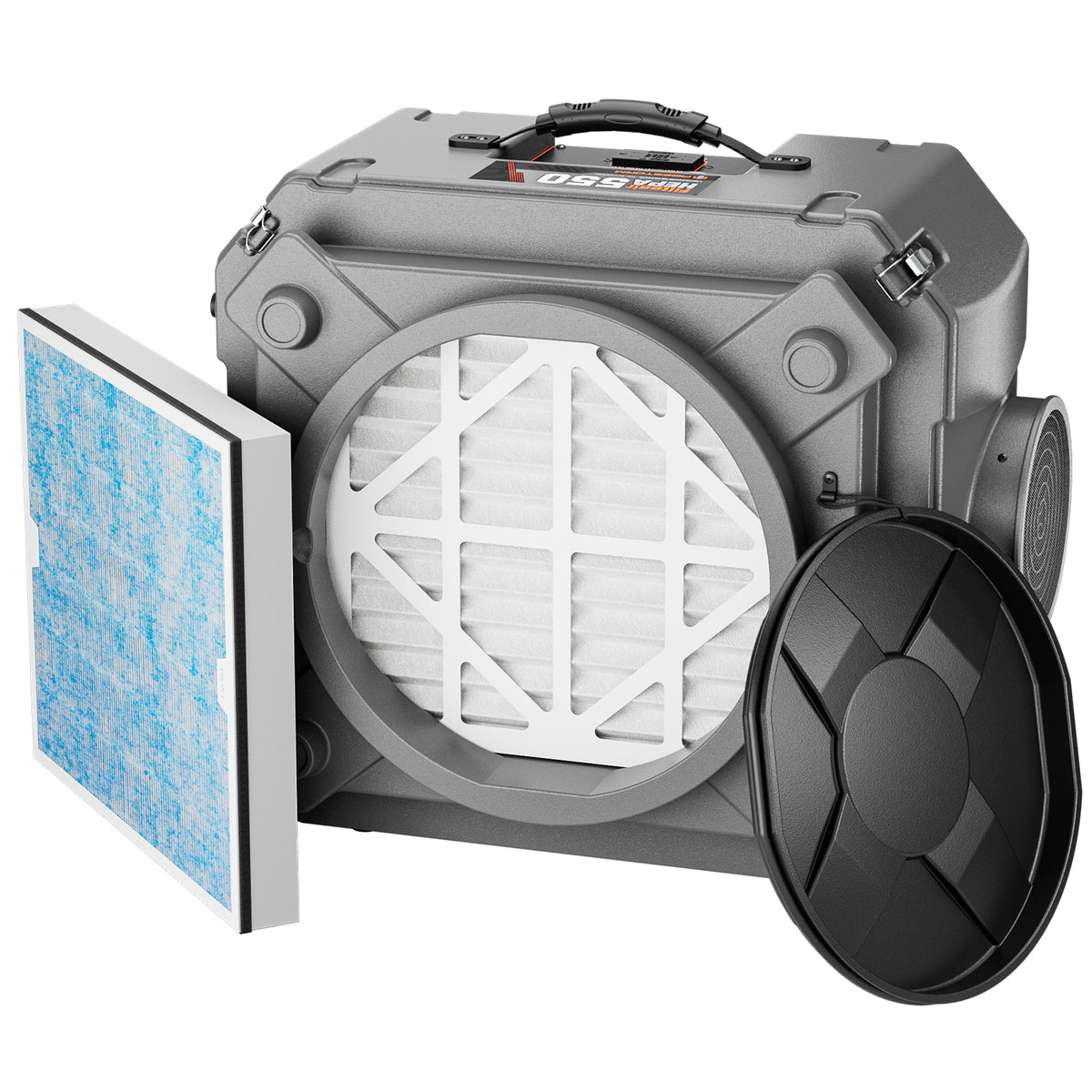
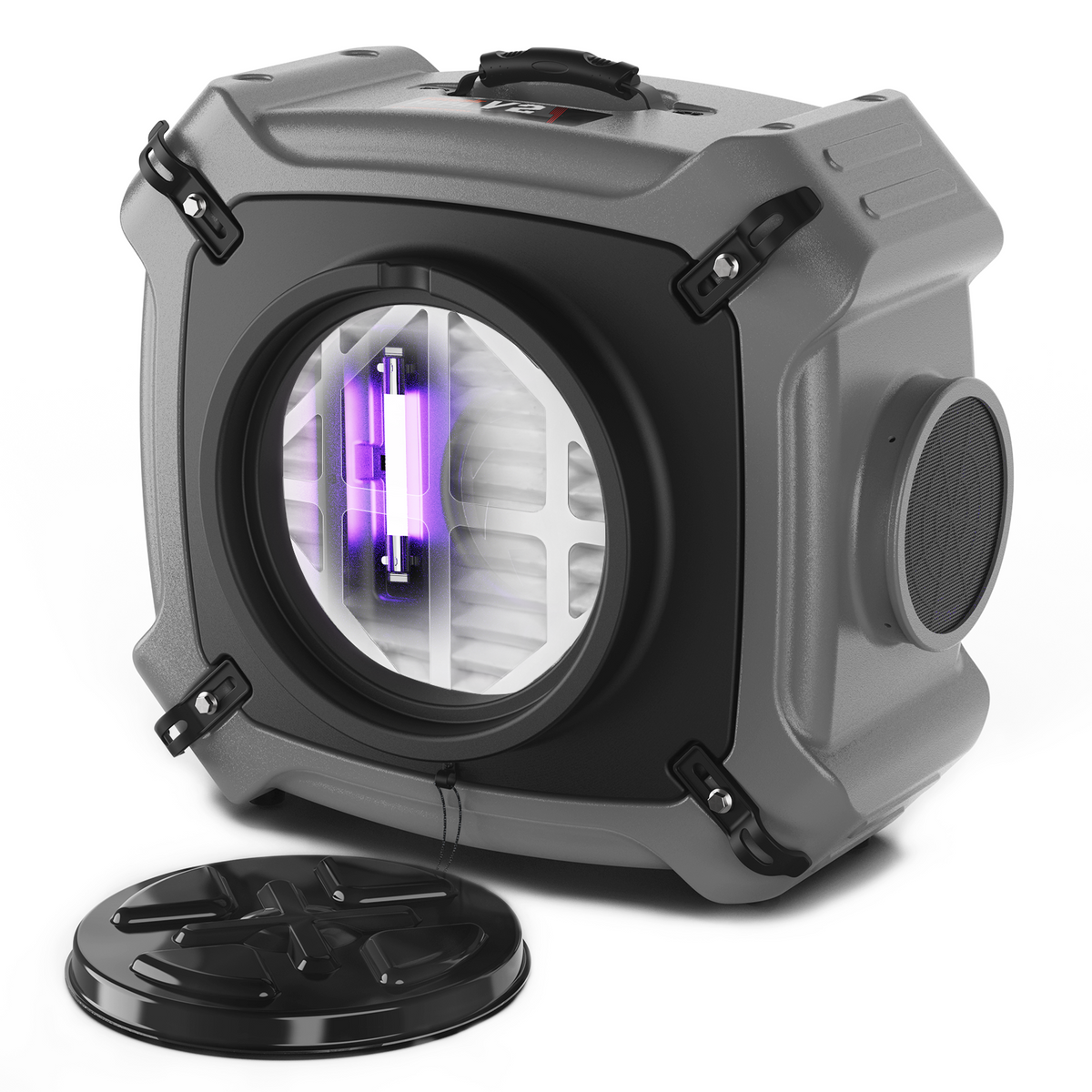
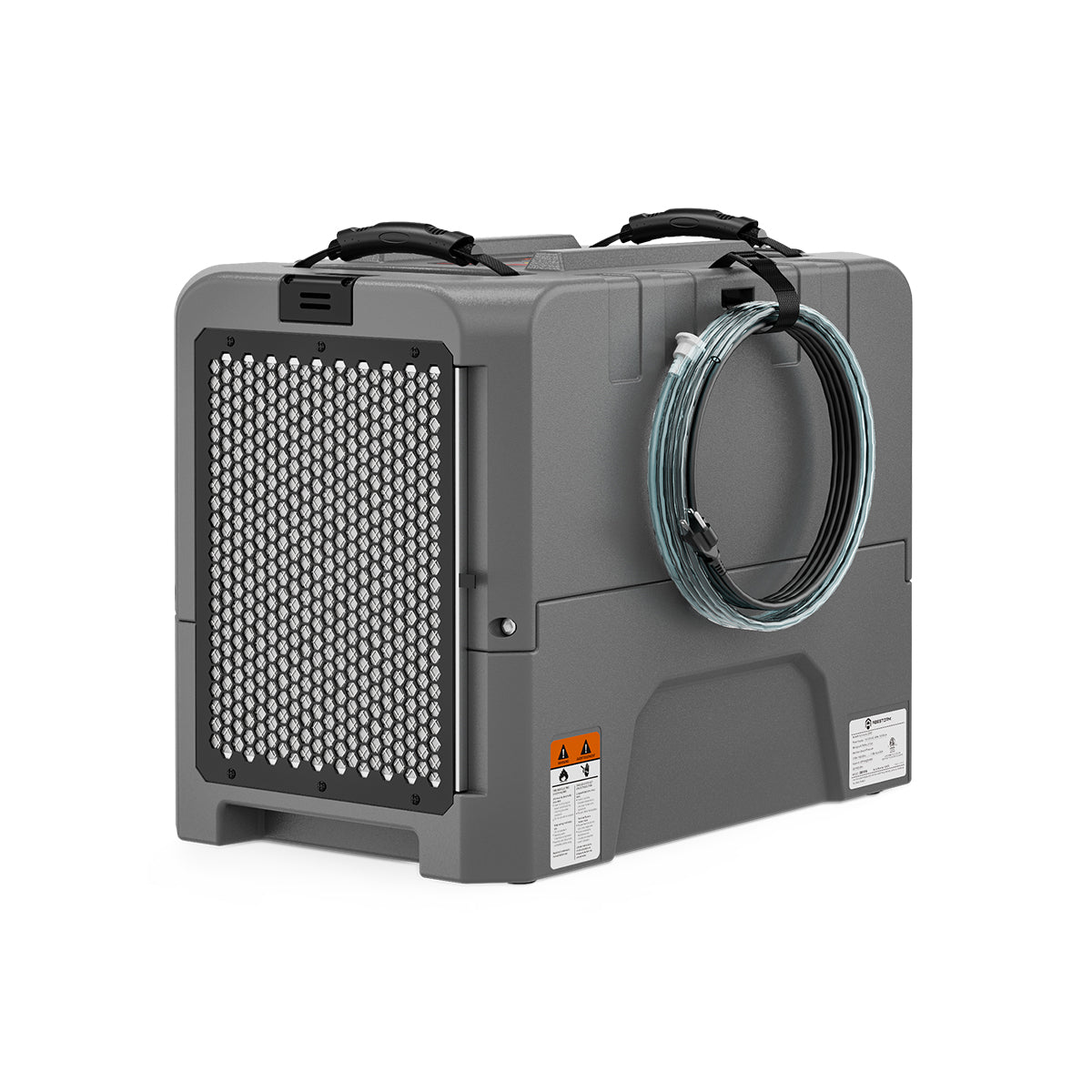
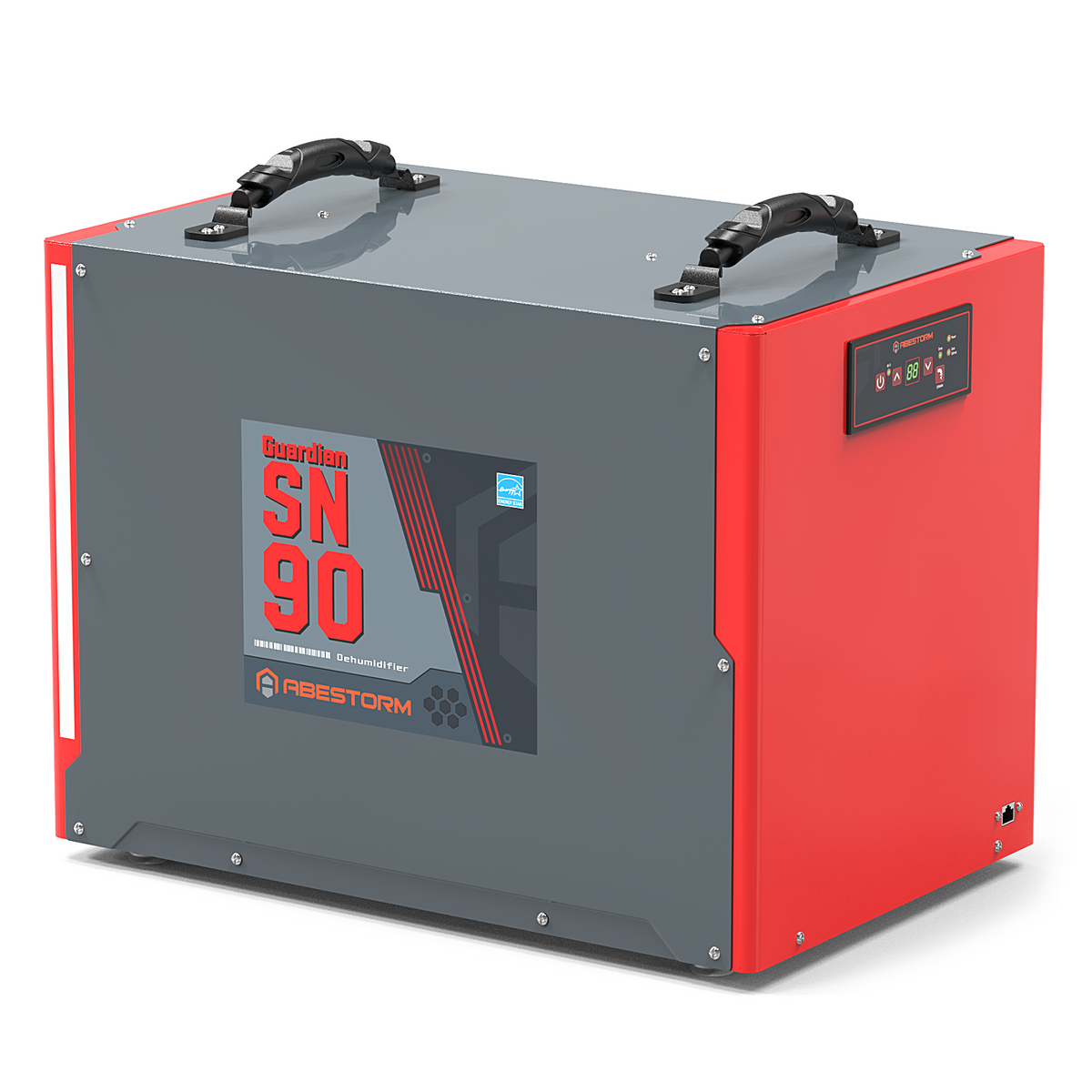

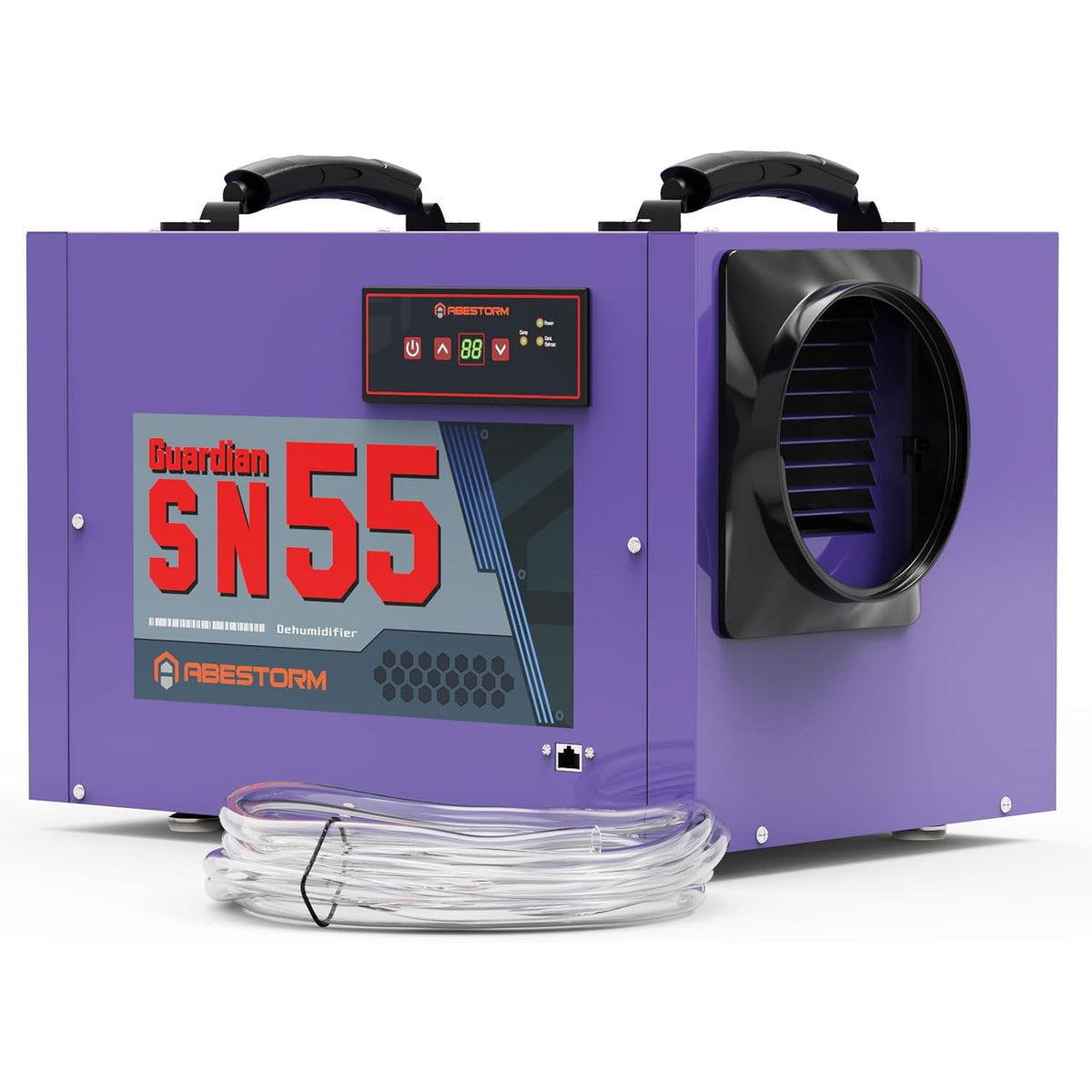

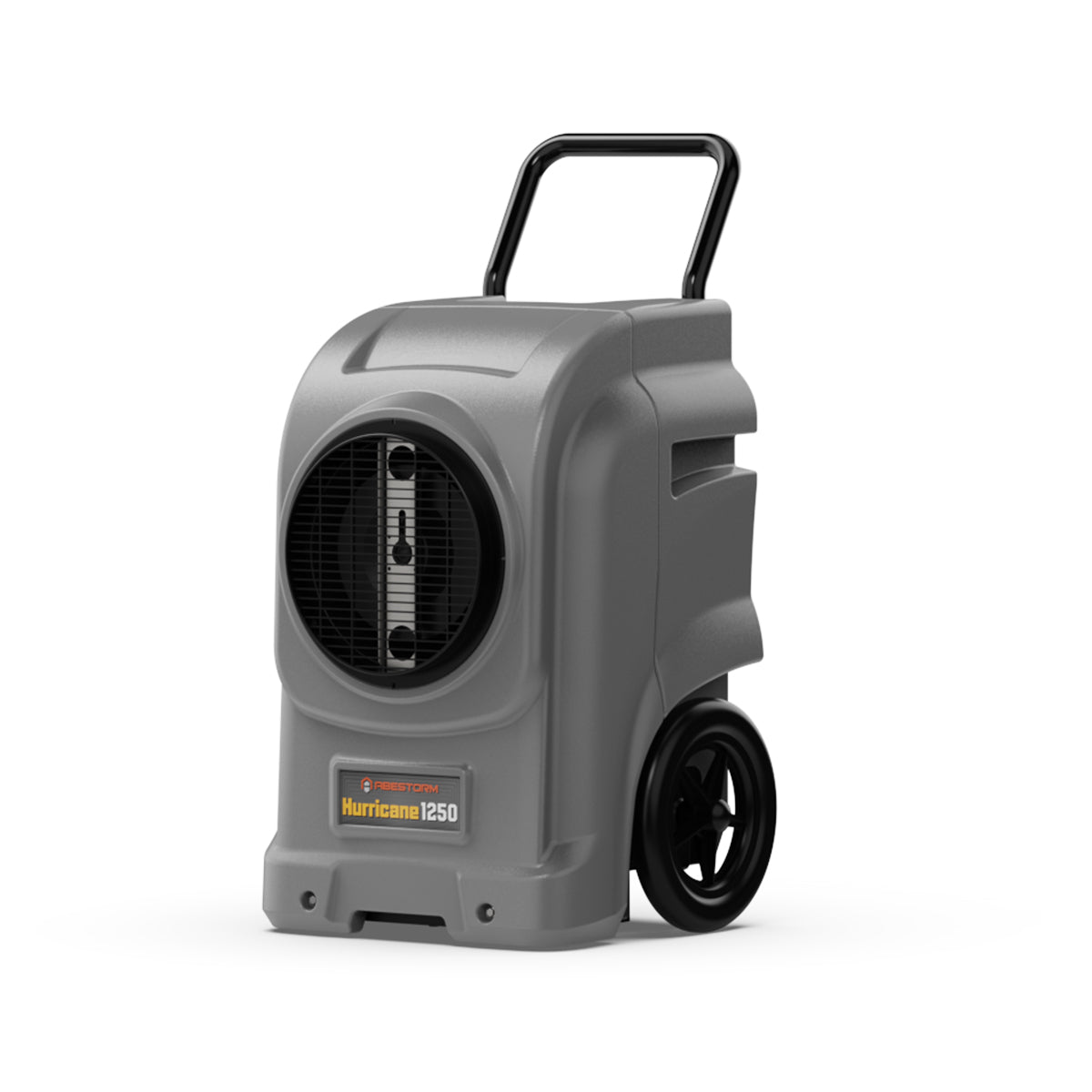
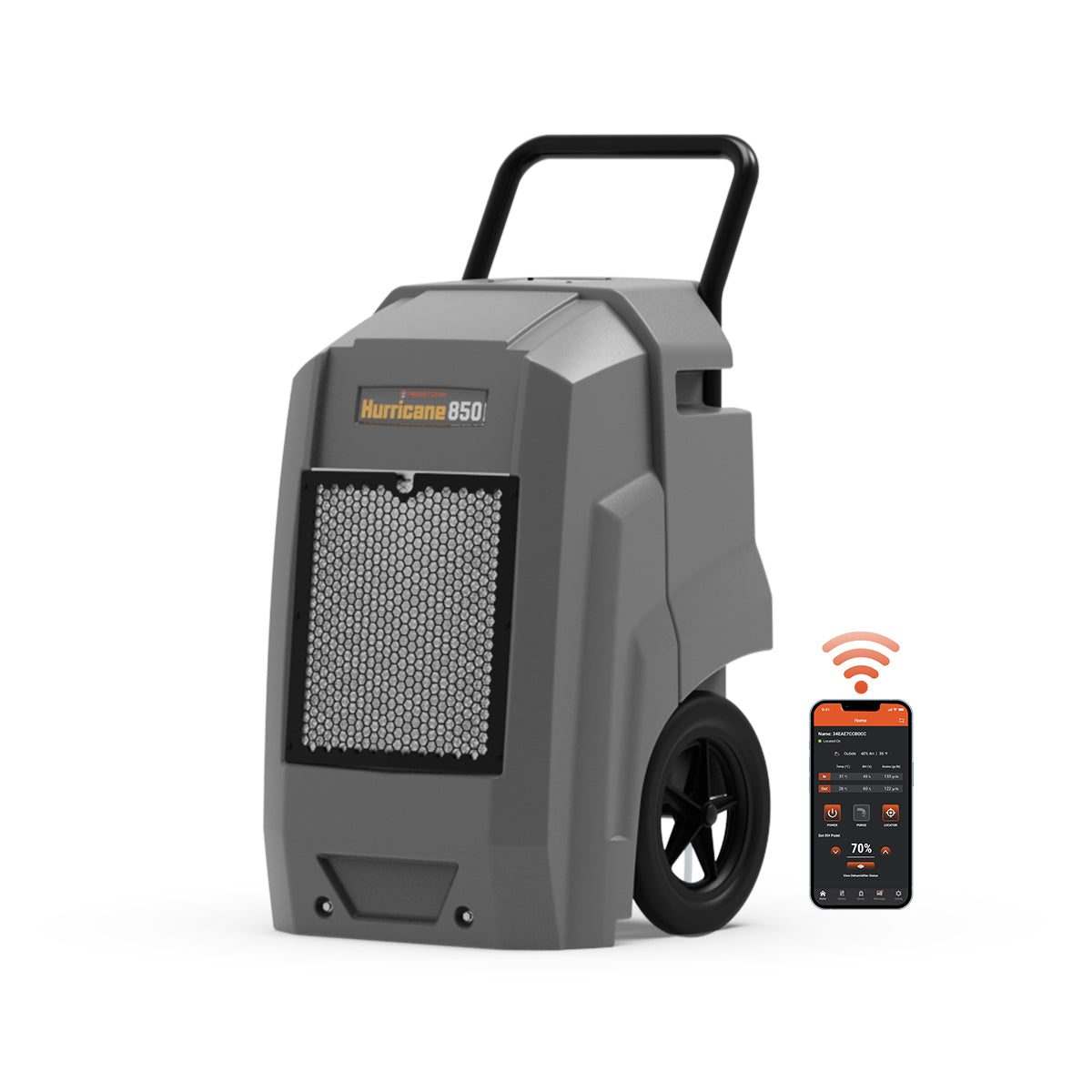

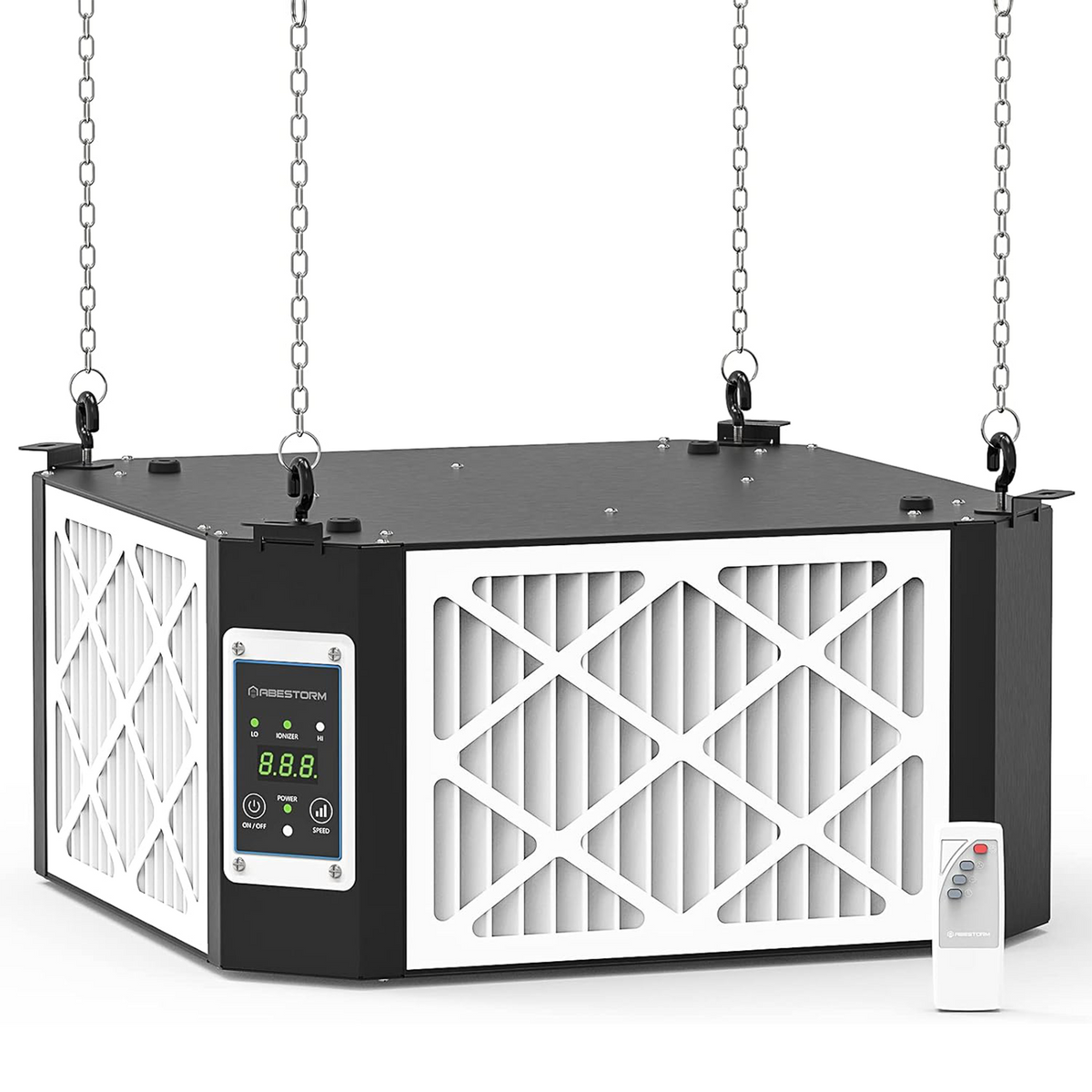
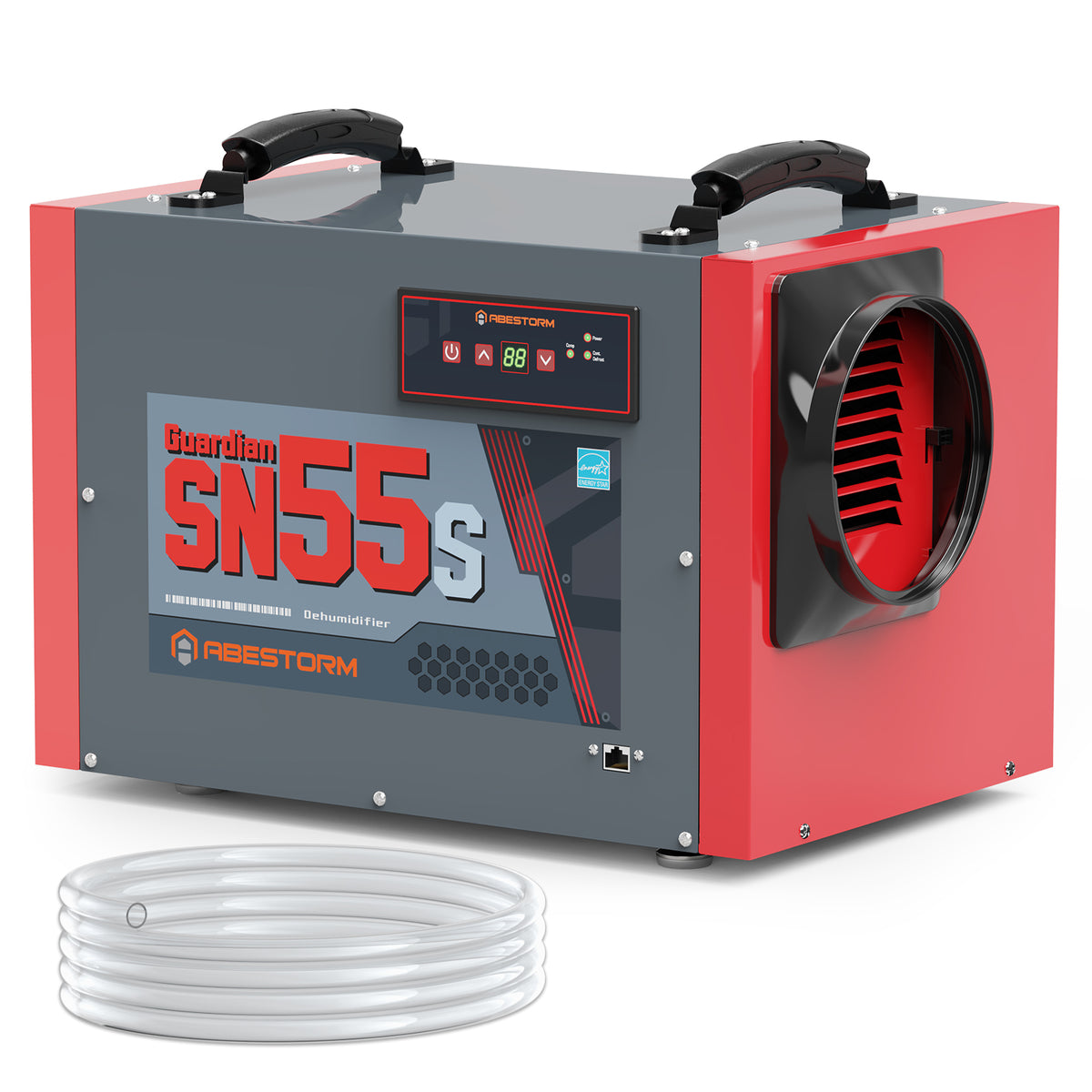

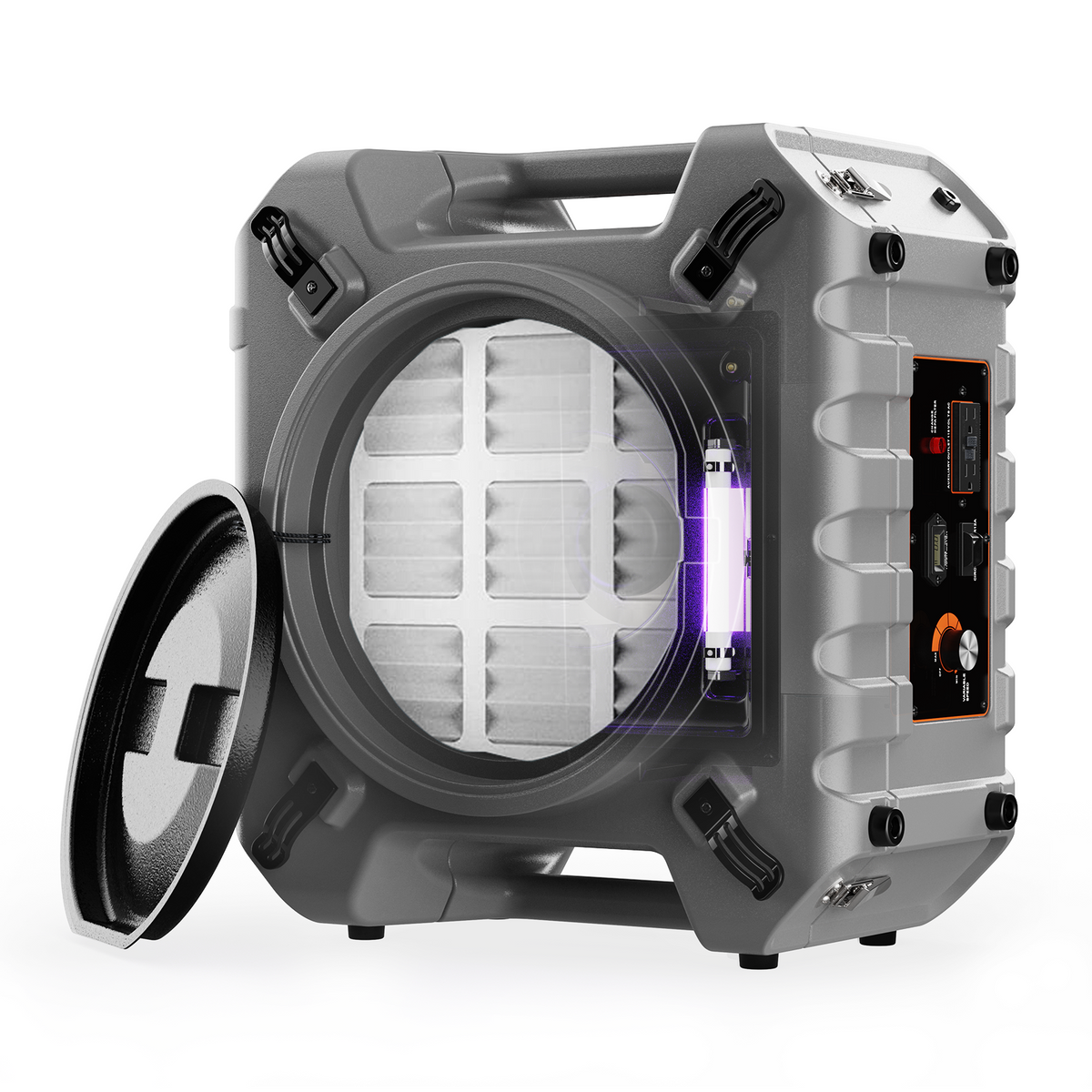
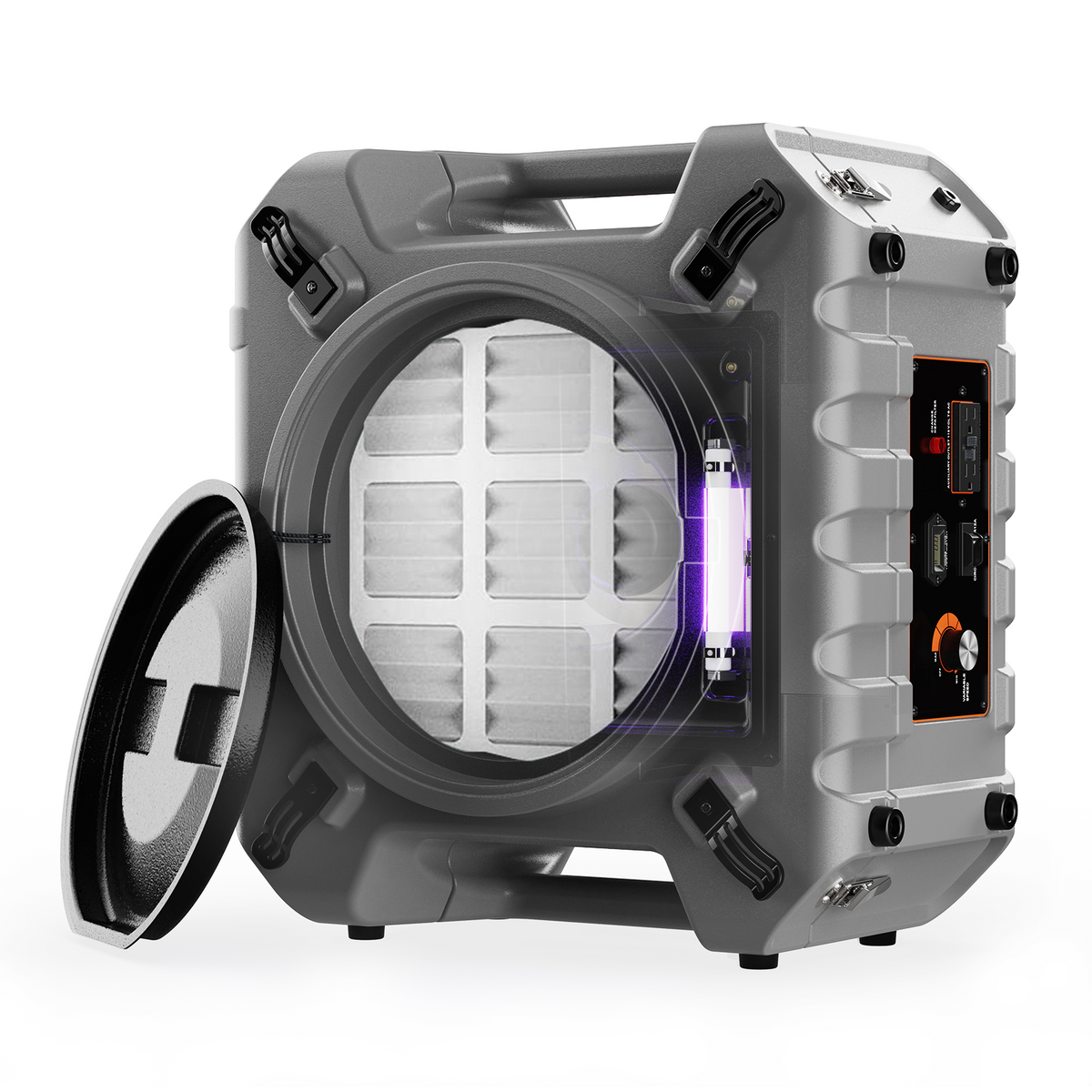
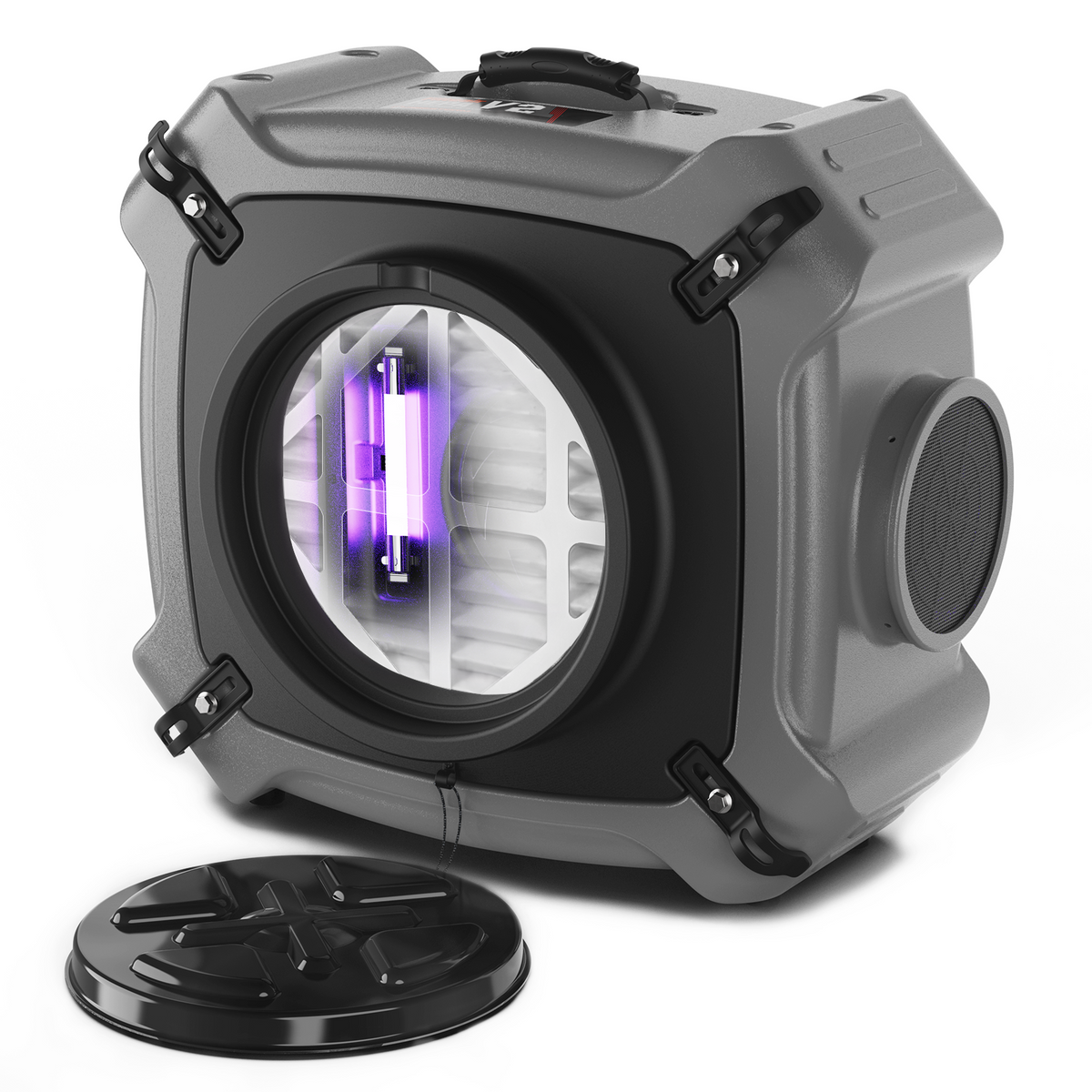
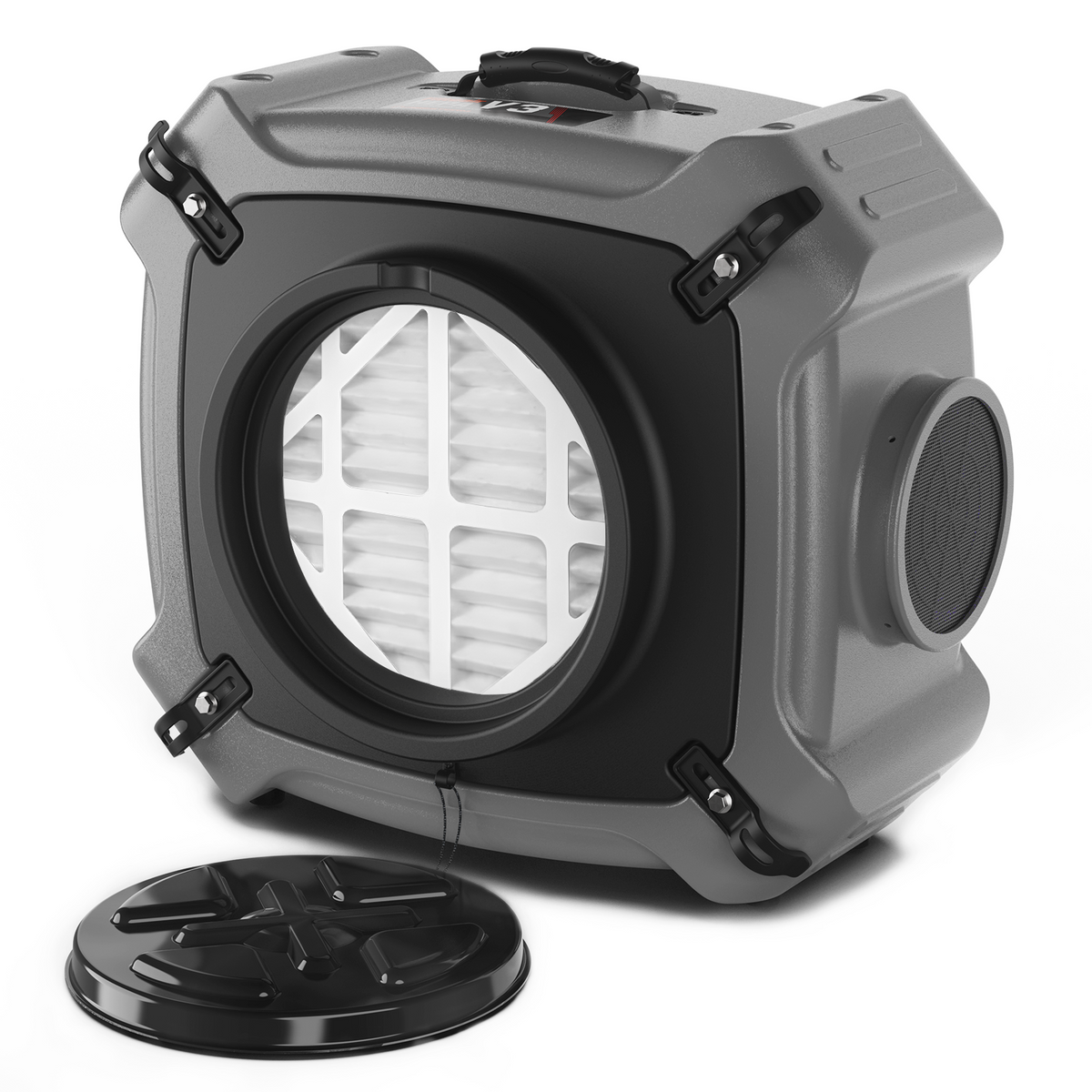
















Shantell
We love this air scrubber! This is the new unit and it's much quieter then other. The filters are easy to find and much cheaper then the big companies. Thank you for making a great product!! Keep up the good work! Thanks again!
Abestorm 550 CFM HEPA Air Scrubber with 3-Stage Filtration System
Learn More >Helmer
This is a great way to reduce the humidity in our crawl space. It has made an incredible difference in the comfort level of our crawl space and even in the adjacent finished space. I recommend this dehumidifier if you are living in an area with high humidity.
Abestorm 198 Pints Energy Star Dehumidifiers | Guardian SNS90
Learn More >Daryl
Heavy duty construction. The build quality is exceptional, and you can tell that it's designed to last. The unit is solid, durable and gives me confidence in it's longevity.
Abestorm 360 Degree Intake Air Filtration System Woodworking | DecDust 1350IG
Learn More >Kimberly
This unit is incredibly impressive! It's quiet, it's efficient, and it's noticeably effective! This product is perfect for multiple occasions of wet craw spaces or emergency cleanup from flooding etc. Very impressive
Abestorm 180 PPD 2,300 Sq.Ft Commercial Dehumidifier with Pump and Drain Hose | Hurricane LGR85
Learn More >Mike
This Abestorm 180 pint dehumidifier is easy to use, and works excellent. Heavy duty shell, commercial grade, very durable, and is perfect for bigger jobs. User friendly control panel with adjustable settings. Remote control and mobile app is an added bonus.
Abestorm 180 PPD 2,300 Sq.Ft Commercial Dehumidifier with Pump and Drain Hose | Hurricane 850
Learn More >David Wright
Used all last summer and fall. Did wonders to driving damp stagnat air from my crawlspace. Easy to install. Kept the box and take it out for winter. Plugged bent opening with block of foam till spring.
Abestorm 260CFM Crawlspace Ventilation Fan | NeatyFresh 260
Learn More >